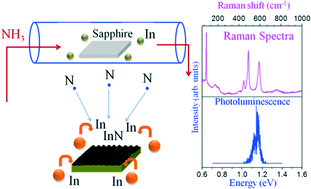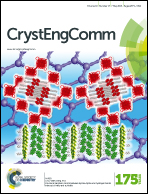Effect of strain relaxation and the Burstein–Moss energy shift on the optical properties of InN films grown in the self-seeded catalytic process†
Abstract
For the first time, high optical quality InN films were grown on a sapphire substrate using the atmospheric chemical vapour deposition technique in the temperature range of 560–650 °C. The self-catalytic approach was adopted to overcome the nucleation barrier for depositing InN films. In this process, seeding of the nucleation sites and subsequent growth was performed in the presence of reactive NH3. We investigated the simultaneous effect of strain and the Burstein–Moss (BM) energy shift on the optical properties of InN films using Raman and photoluminescence spectroscopy. The existence of compressive strain in all films is revealed by Raman spectroscopic analysis and is found to relax with increasing growth temperature. Asymmetric broadening of the A1(LO) phonon mode is observed with the onset of plasmon–phonon interaction for films grown at 620 °C. A large blue shift of the band gap of InN (1.2 eV) is observed as a collective result of compressive strain in films as well as a BM shift. The carrier density is calculated using the BM shift in the photoluminescence spectra. Finally, a blue shift in the band edge emission is observed further because of the presence of compressive strain in the films along with the BM effect.


 Please wait while we load your content...
Please wait while we load your content...